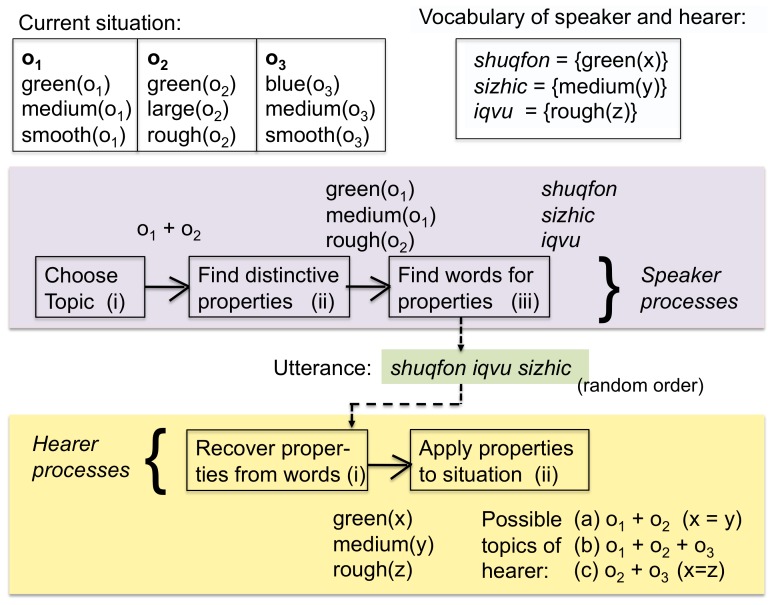Figure 1. The language game.
The situation contains three objects:  which has the properties
which has the properties  ,
,  , and
, and  ,
,  with properties
with properties  ,
,  , and
, and  and
and  with
with  ,
,  , and
, and  . The speaker has chosen
. The speaker has chosen  and
and  as topic and expresses the set of distinctive properties
as topic and expresses the set of distinctive properties  ,
,  to identify
to identify  and
and  to identify
to identify  . After vocabulary lookup the speaker finds that the word shuqfon covers
. After vocabulary lookup the speaker finds that the word shuqfon covers  , sizhic covers
, sizhic covers  and iqvu covers
and iqvu covers  . The utterance is therefore shuqfon iqvu sizhic. The hearer looks up these words in his own vocabulary and recovers
. The utterance is therefore shuqfon iqvu sizhic. The hearer looks up these words in his own vocabulary and recovers  ,
,  ,
,  , where
, where  ,
,  and
and  are variables to be bound to objects in the situation model. In the current situation model, the hearer finds that the topic can be either (a)
are variables to be bound to objects in the situation model. In the current situation model, the hearer finds that the topic can be either (a)  and
and  (implying that
(implying that  and
and  ) or (b)
) or (b)  ,
,  , and
, and  (so that
(so that  ,
,  ,
,  ), or (c)
), or (c)  and
and  (so that
(so that  and
and  )
)

